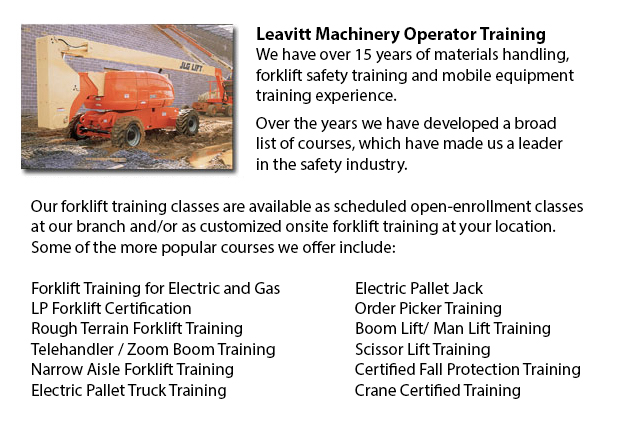
Boom Lift Certification British Columbia - Elevated work platforms allow work and maintenance operations to be carried out at heights that can not be reached by whatever other means. Workers utilizing boom lifts and scissor lifts can be taught the safe operation of these devices by receiving boom lift certification training.
When work platforms are operated unsafely, they have the potential for serious injury and even death, regardless of their lift style, site conditions or application. Electrocution, falls, tip-overs and crushed body parts could be the terrible result of wrong operating procedures.
In order to avoid aerial lift accidents, boom lift operators must be trained by qualified workers in the safe operation of the specific kind of aerial lift they would be making use of. Aerial lifts must not be be altered without the express permission of the manufacturer or other recognized entity. If you are renting a lift, make certain that it is maintained correctly. Prior to utilizing, controls and safety devices must be inspected in order to make sure they are correctly working.
Operational safety procedures are important in preventing accidents. Operators should not drive an aerial lift with the lift extended (even though a few are designed to be driven with an extended lift). Set outriggers, if available. Always set brakes. Avoid slopes, but when required make use of wheel chocks on slopes that do not exceed the slope restrictions of the manufacturer. Adhere to manufacturer's load and weight limitations. When standing on the boom lift's platform, utilize a safety belt with a two-foot lanyard tied to the boom or basket or a full-body harness. Fall protection is not required for scissor lifts which have guardrails. Never climb or sit on guardrails.
The boom lift certification course provides instruction in the following areas: training and certification; safety guidelines to be able to prevent a tip-over; inspecting the travel path and work area; slopes and surface conditions; other tips for maintaining stability; stability factors; leverage; weight capacity; pre-operational check; testing control functions; safe operating practices; mounting a motor vehicle; safe driving procedures; overhead obstacles and power lines; using lanyards and harness; PPE and fall protection; and prevent falling from platforms.
The successful trainee will become familiar with the following: pre-operational check procedures; authorization and training procedures; factors affecting the stability of boom and scissor lifts; how to avoid tip-overs; how to use the testing control functions; how to utilize PPE and strategies to be able to avoid falls.
-
Warehouse Forklift Safety Training British Columbia
Warehouse Forklift Safety Training British Columbia - The corporation would face claims for liability when damage and injuries are sustained in an accident at the workplace. Warehouses can be a hazardous place to work for its workers, making employee... More -
Loader Operator Certification British Columbia
Loader Operator Certification British Columbia - Courses Offered For Getting Loader Operator Certification - Certification for forklifts are required to guarantee the safe operation of forklifts for those employers in industrial, warehouse or constru... More -
Crane / Overhead Crane / Self-Erect Crane / Truck Mounted Crane / Hydraulic Cranes Training in British Columbia
Bridge cranes or likewise called overhead cranes are actually a type of industrial material handling crane making use of a line and hook device that runs on a horizontal beam running along two widely separated rails. Numerous overhead cranes could be... More -
Scissor Lift License British Columbia
Scissor Lift License British Columbia - The operation of scissor lifts carries an inherent chance of danger. Whichever type of powered machine requires correct handling to prevent accidents causing injury or damage. Companies need to make certain tha... More -
Heavy Equipment Training Schools British Columbia
Heavy Equipment Training Schools British Columbia - There are a lot of heavy equipment training schools to select from. If you want to get to the best, it is important to check various aspects of the school in order to ascertain the level of educatio... More -
Telehandler Training British Columbia
Telehandler Training British Columbia - Telescopic handlers usually called telehandlers for short, are an extremely popular piece of heavy construction equipment. They are commonly utilized in the construction and agricultural trades. These machines... More -
Forklift Training Courses British Columbia
Forklift Training Courses British Columbia - When forklift operator safety training is tailored for illiteracy, training time is lessened by 50%. Forklift training certification, lift-truck operator driver safety training evaluation, and train the tr... More -
Heavy Equipment Operator Training British Columbia
Heavy Equipment Operator Training British Columbia - Heavy equipment operator training facilities which provide quality standards in the business, providing field performance work and added machinery training are highly sought after training features... More

Forklift Training British Columbia
TOLL FREE: 1-888-254-6157
forklifttrainingbritishcolumbia.com
Email Us
About Us


